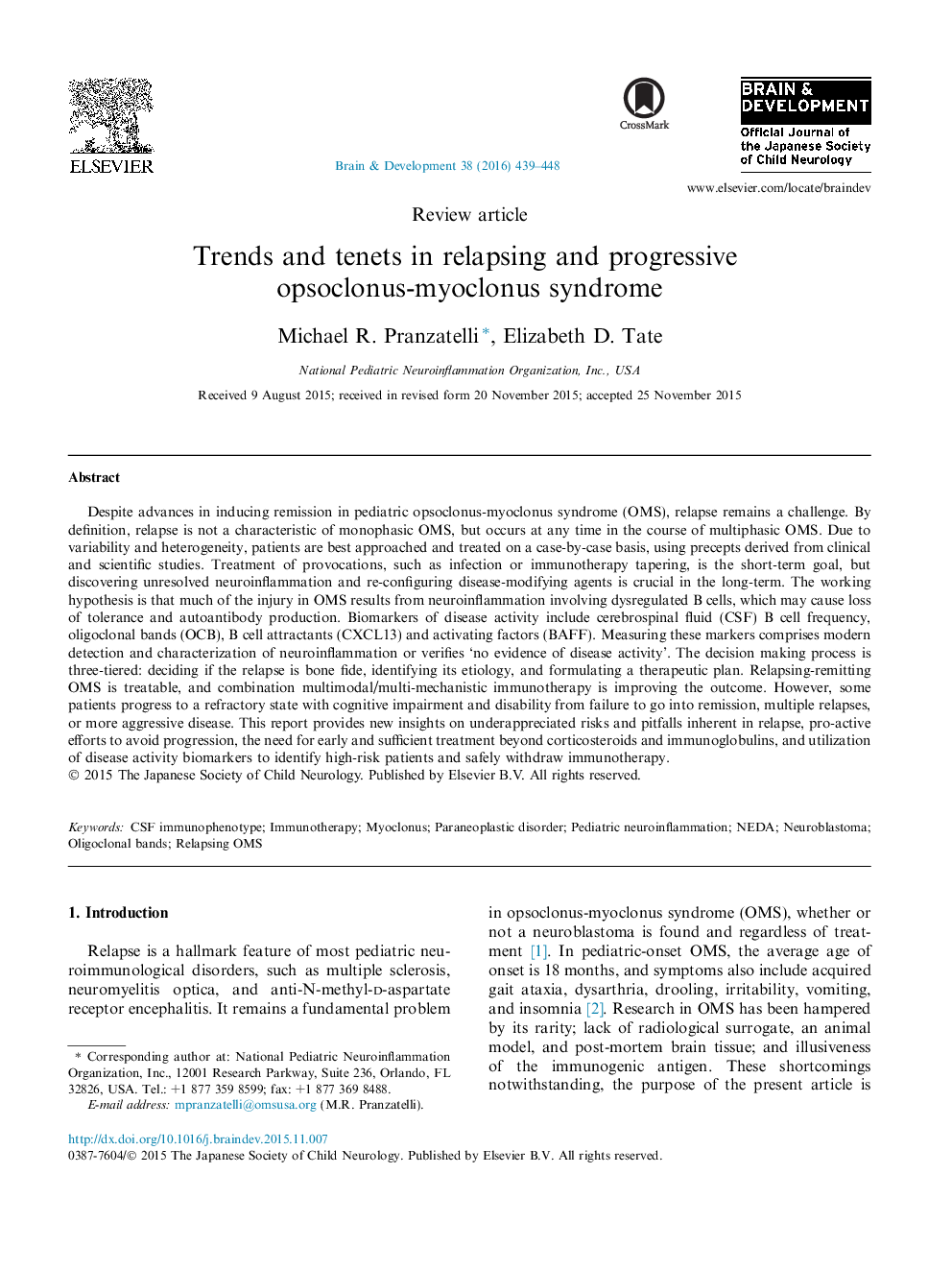| کد مقاله | کد نشریه | سال انتشار | مقاله انگلیسی | نسخه تمام متن |
|---|---|---|---|---|
| 3036639 | 1184379 | 2016 | 10 صفحه PDF | دانلود رایگان |

Despite advances in inducing remission in pediatric opsoclonus-myoclonus syndrome (OMS), relapse remains a challenge. By definition, relapse is not a characteristic of monophasic OMS, but occurs at any time in the course of multiphasic OMS. Due to variability and heterogeneity, patients are best approached and treated on a case-by-case basis, using precepts derived from clinical and scientific studies. Treatment of provocations, such as infection or immunotherapy tapering, is the short-term goal, but discovering unresolved neuroinflammation and re-configuring disease-modifying agents is crucial in the long-term. The working hypothesis is that much of the injury in OMS results from neuroinflammation involving dysregulated B cells, which may cause loss of tolerance and autoantibody production. Biomarkers of disease activity include cerebrospinal fluid (CSF) B cell frequency, oligoclonal bands (OCB), B cell attractants (CXCL13) and activating factors (BAFF). Measuring these markers comprises modern detection and characterization of neuroinflammation or verifies ‘no evidence of disease activity’. The decision making process is three-tiered: deciding if the relapse is bone fide, identifying its etiology, and formulating a therapeutic plan. Relapsing-remitting OMS is treatable, and combination multimodal/multi-mechanistic immunotherapy is improving the outcome. However, some patients progress to a refractory state with cognitive impairment and disability from failure to go into remission, multiple relapses, or more aggressive disease. This report provides new insights on underappreciated risks and pitfalls inherent in relapse, pro-active efforts to avoid progression, the need for early and sufficient treatment beyond corticosteroids and immunoglobulins, and utilization of disease activity biomarkers to identify high-risk patients and safely withdraw immunotherapy.
Journal: Brain and Development - Volume 38, Issue 5, May 2016, Pages 439–448